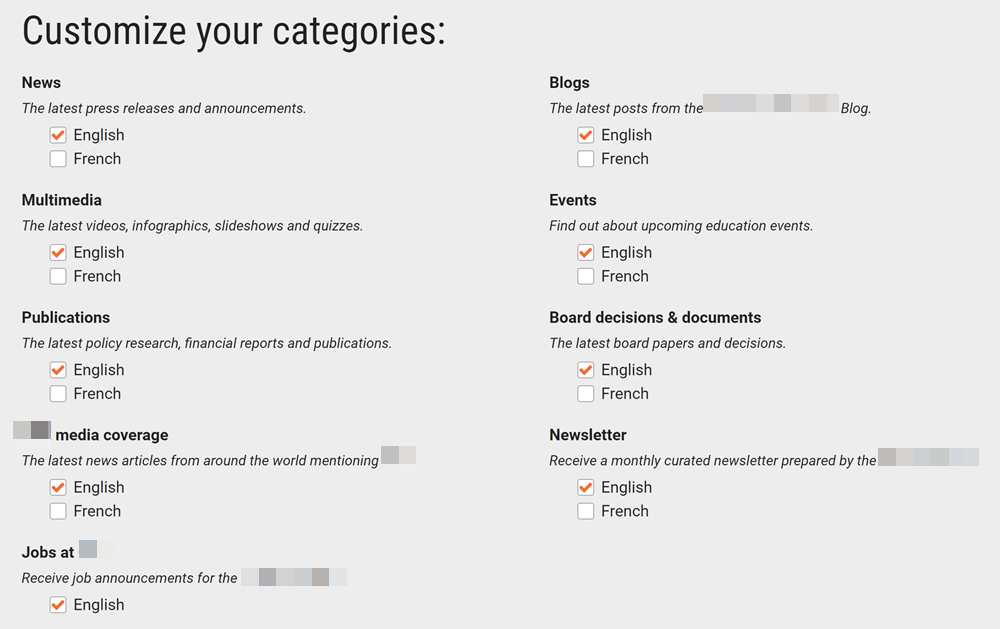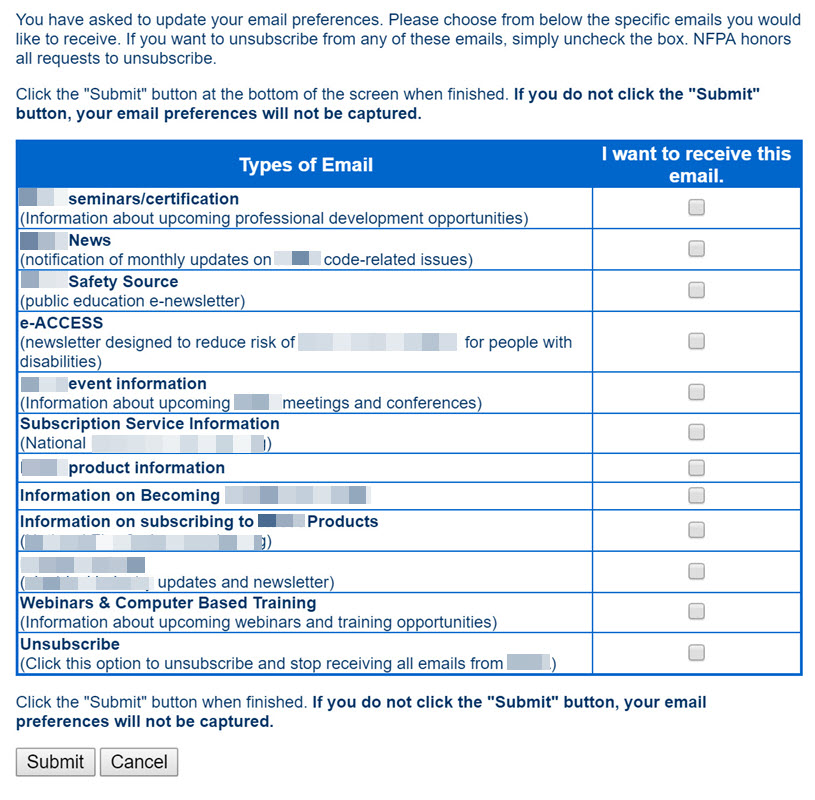3 Common Email Subscriber Preference Center Mistakes – and How to Fix Them
I’ve helped a lot of my consulting clients create or improve subscriber preference centers over the years. The key to success is to create one with options that meet both the subscribers' needs for content and your business goals. Here are a few of the most common preference center mistakes I’ve seen – and how to fix them.
1. Not Having a Preference Center

I’ve worked with a number of clients without preference centers. This is a big mistake, here’s why.
Without a preference center, your subscribers have a binary choice regarding your email program: receive all the emails you send to them or receive none. And the first time they click on the unsubscribe link in one of your email messages, that’s it. The relationship is over. You can’t email them again unless they opt-in again.
If you offer a proper preference center (see more on what constitutes a proper preference center later in this post), it turns an unsubscribe from a binary (subscribe/unsubscribe) choice to a choice with multiple options.
A preference center can give people who no longer want to receive your daily messages the option to get a weekly ‘best of’ email. It can also provide an option for people to unsubscribe from messages on topic A, but continue to receive message from you on topic B.
In a nutshell, preference centers help you retain subscribers; done properly they can reduce your churn as they increase relevance, thanks to subscribers self-selecting what type of content they want to receive from you. It’s less expensive to keep a subscriber than it is to get a new one.
2. Organizing Your Preference Center Based on Content Format
 Love this client, but didn’t love how their preference center was organized.
Love this client, but didn’t love how their preference center was organized.
Their website features seven different focus areas for their work.
Their audience is very varied, from people working in the trenches on these issues, to large donors supporting the efforts with dollars, to journalists covering these topic areas.
Now take a look at the email preference center. It’s all about the format, not the topic, of the content.
Let’s say I’m interested in just one of the seven focus areas (which is not unusual here); there’s no way for me to just get information on that single focus area via email. I need to signup for multiple format categories (blogs, events, multimedia, publications, etc.) and filter through all the content to get to what I’m interested in.
This type of preference center does make the back-end content mapping easier, since it doesn’t require any tagging or categorizing of content by topic. But it’s not a good user experience.
We’re about to launch a revised subscriber preference for this client, one that allows subscribers to choose some or all of the following:
- A monthly newsletter
- A weekly highlights email
- A choice of 6 topics areas for daily updates
If your preference center is based on content format, now’s the time to analyze the content topics you cover and create subscriber-focused preferences.
3. Organizing Your Preference Center Based on The Intent of the Email
 Here’s another preference center from a client I worked with a few years ago.
Here’s another preference center from a client I worked with a few years ago.
They had a strong content marketing program, offering editorial newsletters and information, but their business model was dependent on selling training and publications.
You can see the original preference center here. The issue is that when they developed it, they purposely separated the editorial content from the promotional content.
See the categories for news, safety source, and e-access? Those are editorial categories. Most of the others are promotional. What we found that was most subscribers were opted-in for the editorial content, but had unsubscribed or never opted-in for the promotional content.
The best content marketing programs combine editorial with promotional content, they don’t silo the two.
It’s like a magazine – you buy it for the articles but while you’re reading it you can’t help but see the ads. What if publishing companies offered you a choice of receiving the articles and/or the ads? In most cases you’d probably choose the former and forgo the later. And that would be problem, because the advertising is what covers the majority of the cost of producing the magazine.
This is another place where we revamped the preference center to focus on key topic areas, and we made sure that we included relevant editorial content as well as relevant promotional content in each topic area.
Next Steps
When was the last time you took at look at your company’s email preference center? If it’s been a while, now’s the time to check what options you’re offering your subscribers and make sure you aren’t making any of these three key mistakes. And if you, it’s time to fix them.
Take a look and let me know what you find…

 How to resolve AdBlock issue?
How to resolve AdBlock issue? 
